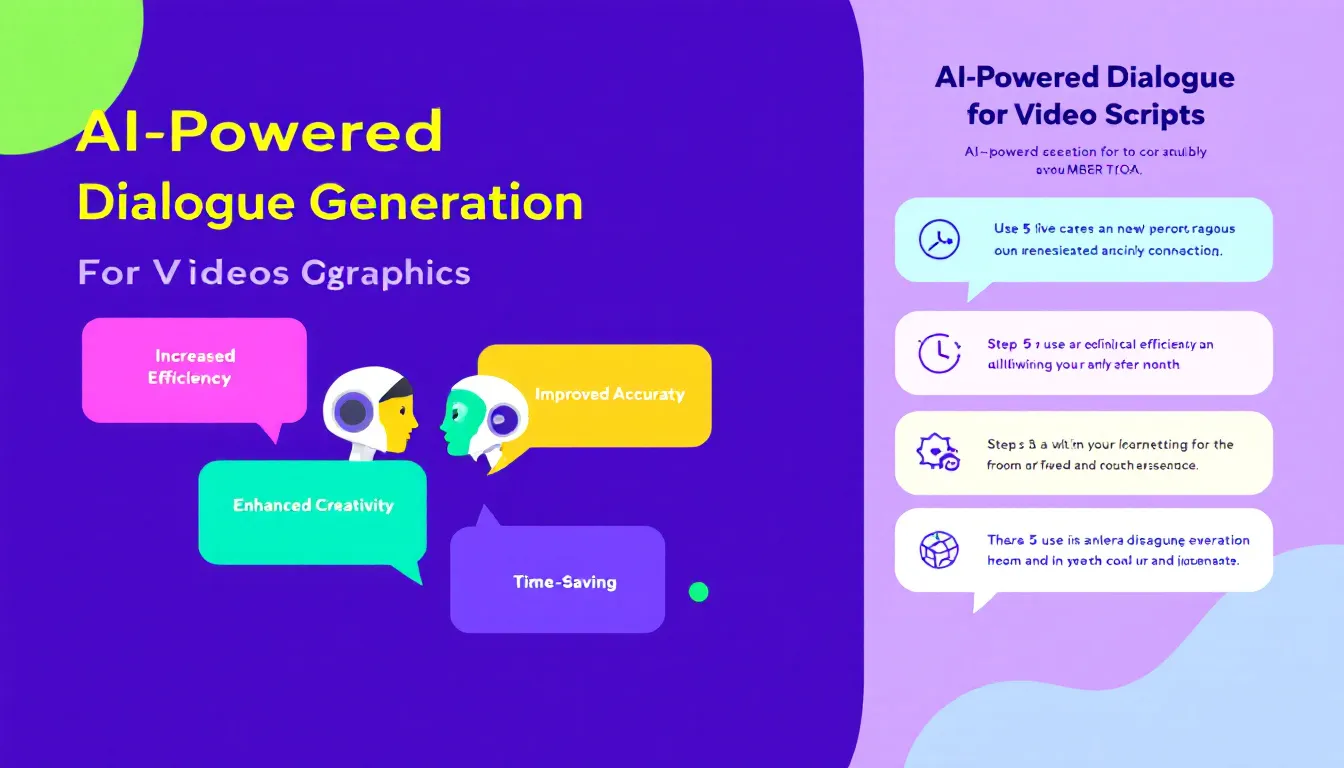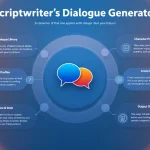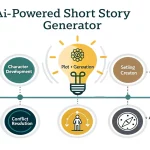Is this tool helpful?
How to Use the Dialogue Generation Tool Effectively
This AI-powered Dialogue Generation Tool helps you create compelling character conversations for your video scripts. Here’s how to use each field for the best results:
-
Characters: Enter the characters involved in your dialogue along with a brief description of their roles or personalities. This helps the AI create distinct voices.
- Example 1: Maya: A fearless investigative journalist, Raj: A conflicted whistleblower
- Example 2: Lisa: An optimistic startup founder, Marco: A cautious investor
-
Topic: Define the main subject or theme of the conversation to guide the dialogue’s focus.
- Example 1: Uncovering corporate fraud in the tech world
- Example 2: Negotiating investment terms for a new app
-
Plot Context (Optional): Share details about the setting or situation the scene takes place in. This provides atmosphere and background that shape the dialogue.
- Example 1: Late-night meeting in a dimly lit underground parking lot
- Example 2: A bustling co-working space filled with hopeful entrepreneurs
-
Dialogue Length: Specify how long you want the dialogue to be. Use units like number of exchanges, word count, or duration for clarity.
- Example 1: 6 exchanges
- Example 2: 400 words
- Generate Dialogue: Press the button to create your customized conversation based on the inputs.
- Review and Copy: After generation, read the dialogue carefully. If it fits your script, use the copy function to transfer the text to your writing platform.
Providing clear, detailed inputs improves the relevance and quality of your AI-generated dialogue.
Engaging Introduction: What Is the Dialogue Generation Tool?
The Dialogue Generation Tool uses artificial intelligence to help video scriptwriters quickly create authentic and engaging conversations between characters. By analyzing the details you provide about characters, topics, and settings, the tool produces dialogue that fits naturally within your story.
This tool saves you time by generating initial drafts that maintain character consistency, explore different narrative options, and reflect genuine human interactions. Whether you’re struggling with writer’s block or need fresh ideas, this AI helper makes scripting easier and more productive.
Key Benefits of Using This AI-Powered Dialogue Creator
- Fast Drafting: Generate complete dialogues in seconds, reducing time spent on initial writing.
- Character Consistency: Maintain distinct voices aligned with character traits you specify.
- Scenario Flexibility: Quickly produce multiple dialogue variations to explore different story paths.
- Creative Support: Overcome writer’s block with AI-generated inspiration tailored to your project.
- Natural Conversations: Dialogue feels realistic and matches the style expected in video scripts and screenplays.
- Accessible to All Skill Levels: Whether novice or professional, you can benefit from AI-enhanced scriptwriting.
Practical Use Cases: How to Apply the Dialogue Generation Tool in Scriptwriting
This tool suits various video and film genres, helping you craft conversations that fit your narrative needs. Here are typical scenarios where it proves useful:
1. Developing Character-Driven Scenes
Use detailed character descriptions to generate dialogue that reveals personality traits, motivations, and conflicts, enriching your script’s depth.
2. Exploring Alternative Dialogue Options
Create multiple versions of the same conversation with different tones or outcomes to find the best fit for your story.
3. Overcoming Writer’s Block Quickly
When stuck, generate a starting draft to jumpstart your writing session and build momentum.
4. Streamlining Revision and Refinement
Use AI-created dialogue as a base to polish your script, focusing on creative touches and narrative flow rather than starting from zero.
Example Scenario: Workplace Drama Dialogue
Characters: Karen: An ambitious marketing director; Tom: A skeptical junior analyst
Topic: Discussing the launch strategy for a new product
Plot Context: In a glass-walled conference room with a tense atmosphere
The tool could generate exchanges showing Karen’s drive clashing with Tom’s cautious approach, providing a natural flow that reflects workplace tension.
Example Scenario: Fantasy Adventure Dialogue
Characters: Eldrin: A wise old mage; Lyra: A young warrior seeking guidance
Topic: Planning a quest to recover a stolen magical artifact
Plot Context: Seated around a campfire under a starry sky
The generated dialogue captures Eldrin’s experience and Lyra’s determination, helping you visualize the scene’s tone and pace.
Optimizing Your Input for Better AI Dialogue Output
The quality of the dialogue you receive depends on how well you define your input. Try these tips:
- Be Specific: Use detailed character descriptions instead of vague labels.
- Clarify Setting: Provide clear plot context to shape atmosphere and tone.
- Define Length: Set realistic dialogue length based on your script’s pacing needs.
- Focus Topic: Center your dialogue around one main subject for coherent conversations.
With precise inputs, the AI better understands your requirements and delivers dialogues that align closely with your storytelling goals.
Important Disclaimer
The calculations, results, and content provided by our tools are not guaranteed to be accurate, complete, or reliable. Users are responsible for verifying and interpreting the results. Our content and tools may contain errors, biases, or inconsistencies. Do not enter personal data, sensitive information, or personally identifiable information in our web forms or tools. Such data entry violates our terms of service and may result in unauthorized disclosure to third parties. We reserve the right to save inputs and outputs from our tools for the purposes of error debugging, bias identification, and performance improvement. External companies providing AI models used in our tools may also save and process data in accordance with their own policies. By using our tools, you consent to this data collection and processing. We reserve the right to limit the usage of our tools based on current usability factors.







